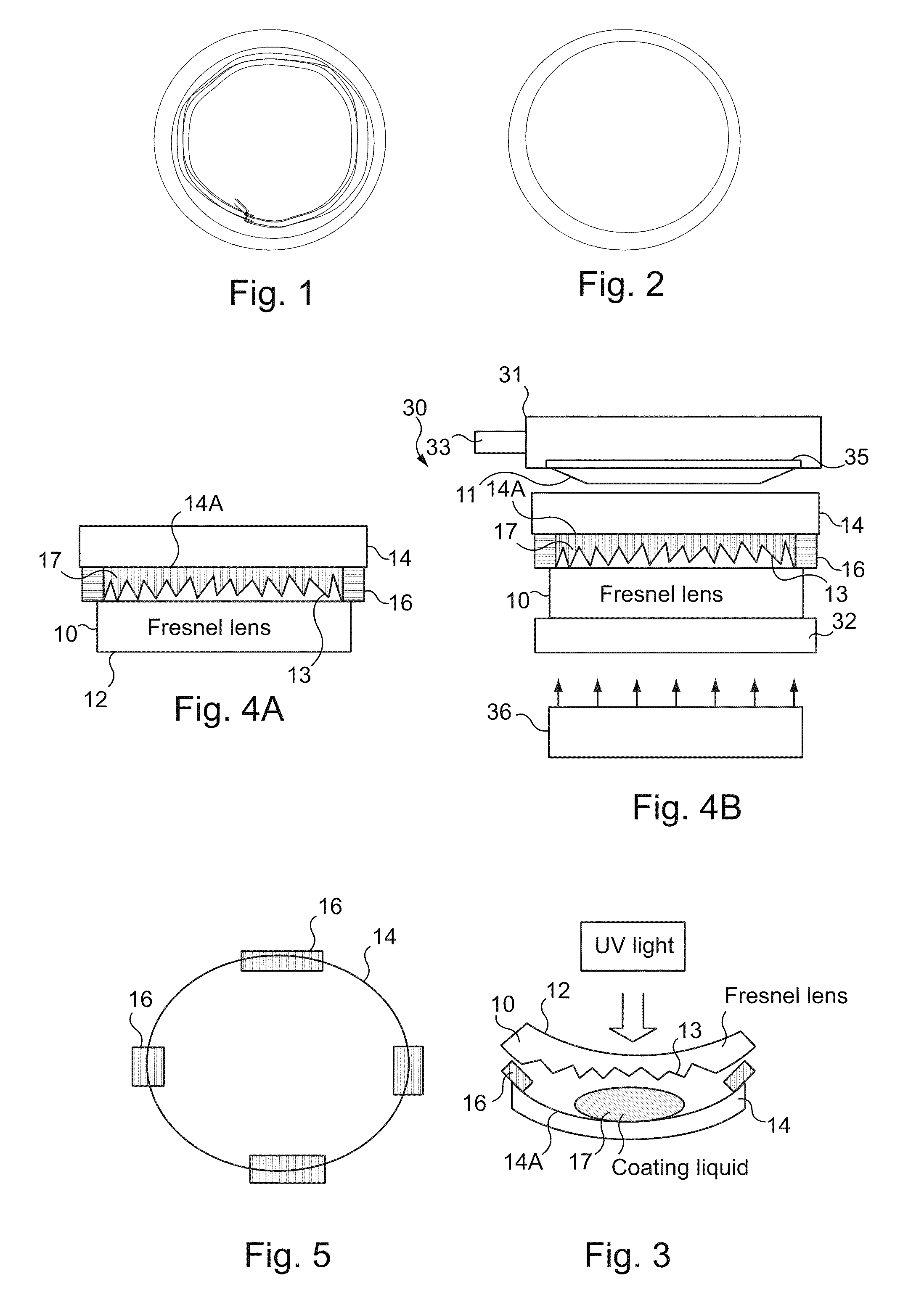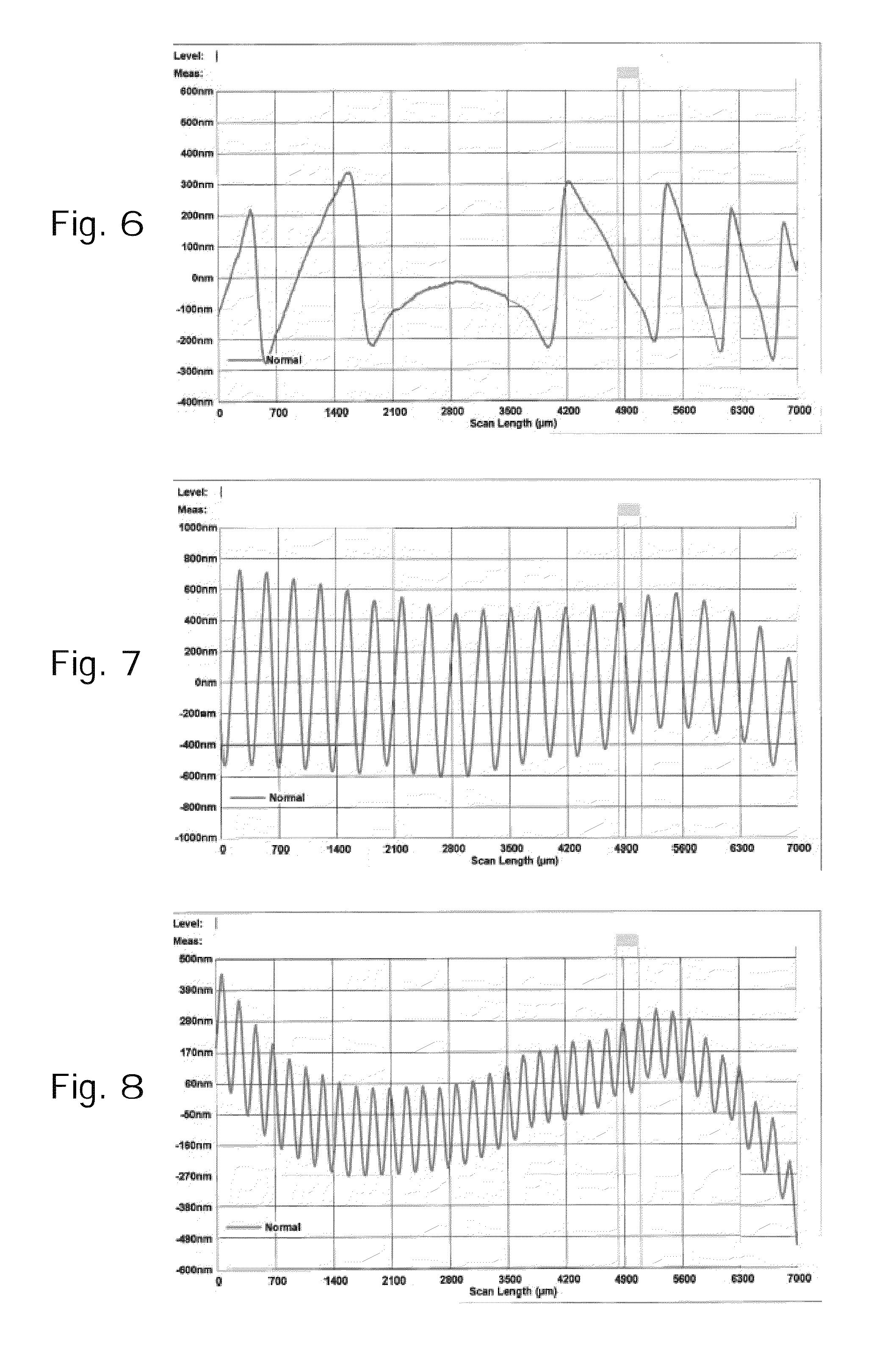Fresnel lens coating process
- Summary
- Abstract
- Description
- Claims
- Application Information
AI Technical Summary
Benefits of technology
Problems solved by technology
Method used
Image
Examples
example 1
[0072]A 4.0 base Fresnel lens blank of polycarbonate having a refractive index of 1.59 was injection molded. In the present example the Fresnel structure or the structured surface of the Fresnel lens blank was located on the convex side of a convex-concave lens blank (see FIG. 3). The Fresnel structure height of the structured surface of the Fresnel lens blank was 150 μm and the optical power of the Fresnel lens design in air was +6.0.
[0073]A corresponding 4.0 base glass mold part had a molding surface which matches the base curvature of the Fresnel lens structured surface. So-called spacer tape was used for defining the plurality of spacers between the mold part and the Fresnel lens blank. The spacer tape portions were applied to the edge of the glass mold part at circumferentially spaced locations and also to the edge of the Fresnel lens blank and served to calibrate the thickness of the coating composition in association with the application of light pressure by the air balloon o...
example 2
[0078]The modalities of this example were the same as those of Example 1, except as regards the axial length of the spacer tape portions which were approximately 650 μm to obtain a coating thickness of about 620 μm. The surface quality of the much thicker coating of Example 2 is even better than that of Example 1. The surface roughness was less than 100 nm and the optical quality was good, too.
example 3
[0079]The modalities of this example were the same as those of Example 1, except that the Fresnel lens bulk material was a high index polythiourethane (nD=1.60). The polythiourethane lens blank was of the same design as the polycarbonate Fresnel lens of Examples 1 and 2. The resulting coated Fresnel lens blank produced by the press coating process had the same good optical and cosmetic qualities as those of the coated lens blank of Example 1.
PUM
 Login to View More
Login to View More Abstract
Description
Claims
Application Information
 Login to View More
Login to View More - R&D
- Intellectual Property
- Life Sciences
- Materials
- Tech Scout
- Unparalleled Data Quality
- Higher Quality Content
- 60% Fewer Hallucinations
Browse by: Latest US Patents, China's latest patents, Technical Efficacy Thesaurus, Application Domain, Technology Topic, Popular Technical Reports.
© 2025 PatSnap. All rights reserved.Legal|Privacy policy|Modern Slavery Act Transparency Statement|Sitemap|About US| Contact US: help@patsnap.com



